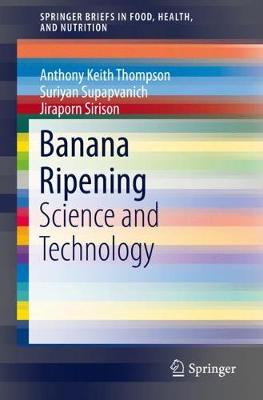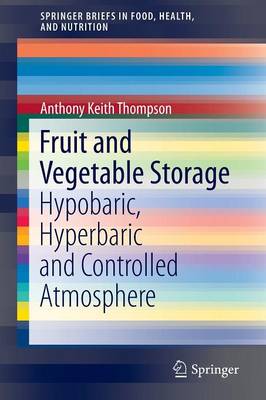SpringerBriefs in Food, Health, and Nutrition
2 total works
Banana Ripening
by Anthony Keith Thompson, Suriyan Supapvanich, and Jiraporn Sirison
Published 25 September 2019
The technology used to ripen bananas is affected by a wide range of factors, including the cultivar, growing conditions, harvesting method, and maturity at which the fruit are harvested and handled. Various post harvest treatments applied to fruit can also impact ripening. While many textbooks have been dedicated to Musa (bananas and plantains), none have focused exclusively on the ripening process.
The commercial ripening of bananas and the chemical changes that occur thereby are considered here in detail. In developed, temperate countries where bananas are imported, successful ripening technologies have evolved. Most bananas, however, are marketed locally in the country where they are grown, and often the ripening technologies used have economic and health implications. This brief offers an in-depth discussion of not only the implications of these technologies, but also of alternative ripening methods and their commercial applications. For an understanding of both the chemical basis by which bananas ripen and the technologies used to control the process, look no further than this essential text.
This Brief reviews the effects of increasing and reducing atmospheric pressure on the postharvest life of fruit and vegetables. The text covers the common methods and technologies used and evaluates the history and benefits of hypobaric and hyperbaric storage. Both of these techniques have the potential to address quantitative and qualitative challenges in the postharvest sector of the fresh fruit and vegetables industry. Hypobaric and Hyperbaric Storage of Fruit and Vegetables reports on the effects of storage on over 45 types of fruit and vegetables, as well as on whole plants and cut flowers. As consumer demand for high quality product increases, proper postharvest storage will continue to gain in importance. The environmental conditions used in storage have a vital influence on the quality, safety and health benefits of fruit and vegetables.

